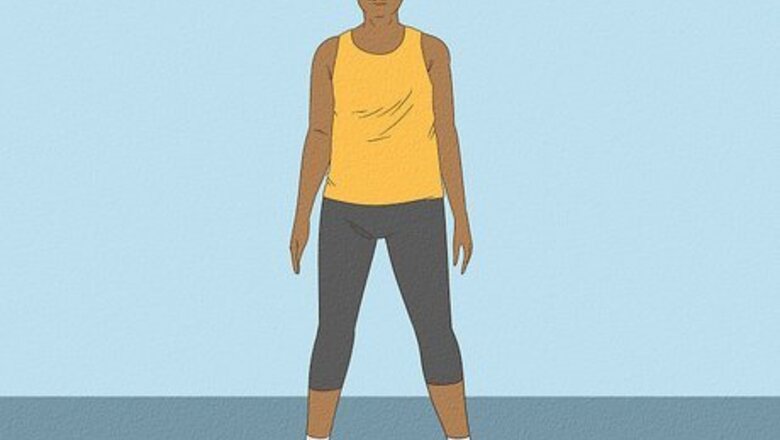
views
Practicing the Basic Twist
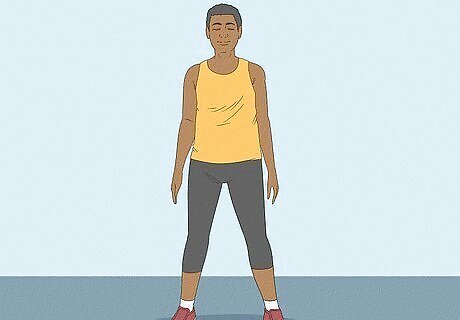
Stand with your feet shoulder-width apart. Put equal weight on both feet. Keep your knees flexible and your torso squared evenly with your hips. There is not a set position your feet must be in to do the twist, but if your legs are too close together, the movements might seem too stiff. Similarly, if your legs are too far apart, you might be able to balance yourself better but ultimately have difficulty keeping the beat. Use the shoulder-width rule as a guideline but experiment with different stances until you find one that feels natural and comfortable.

Move one foot forward. Gently budge one foot ahead of the other. The front foot should not be a full length ahead of the back foot, and there should be some overlap between them. Note that this is technically optional, even though it is fairly standard. You can still do the twist while keeping both feet in the same place.
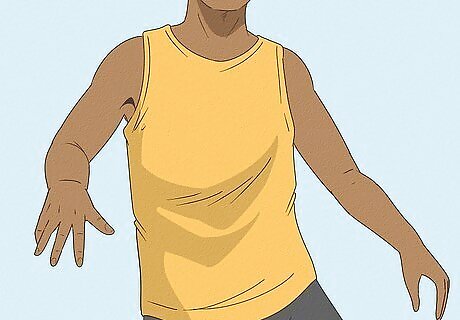
Hold your arms away from the body. Extend both arms outward and away from the body. Don't extend them straight out. You should keep them bent slightly at the elbow. Imagine your arms are in a runner's position, but looser. The upper part of your arms should be held close to the body, and your elbows should point inward just a bit. The lower part of your arms should be held diagonally out and upward. Keep your wrists and hands loose. As you twist, your arms will follow the movement of your hips. As your weight shifts to one side and your waist twists back, the arm of that same side will naturally move downward and back. To keep balance, the other arm should move upward and forward.
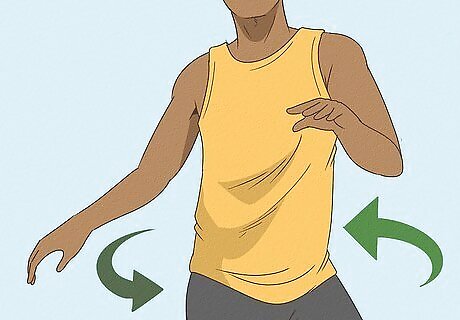
Twist your hips. Swing your hips dramatically from side to side. As you twist your hips, your waist and legs should also twist or rotate from side to side in a similar manner. Rotate your torso as you rock your hips. As you rock or swing your hips to the right side, your torso and waist need to rotate toward your front right side. As you do this, your right leg also needs to shift forward. When you rock your hips to the left, the left side of your waist needs to rotate forward as the right side shifts back. Your left legs should shift forward as it follows the natural movement of your hips and waist.
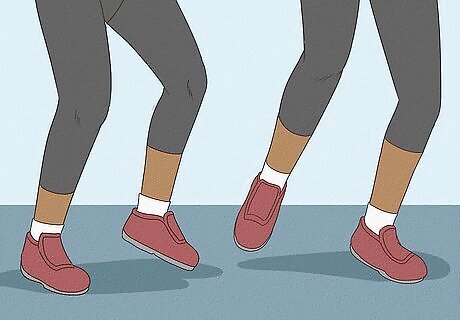
Shift your body weight. As you rock from side to side, shift your center of gravity or body weight so that it is supported by the ball of your foot. You should alternate from foot to foot, placing your weight over one foot as you twist to that side and over to the other foot as you twist back. The important thing to remember as you twist is to keep your body down. By shifting your weight from side to side, your body will usually have a natural tendency to stay low. This is further supported by keeping your legs gently bent at the knees. Staying low is important if you want to do the dance correctly, but it also helps you to maintain your balance more effectively.
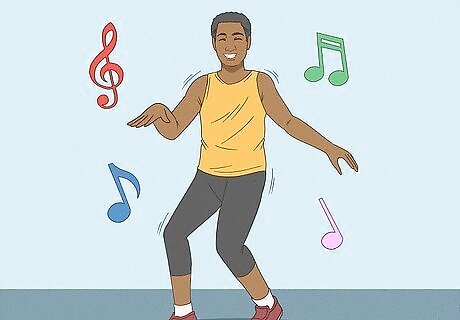
Dance to the beat. You need to be on the rhythm of the song you dance to. To help maintain the rhythm of the dance, make sure that each full twist lands on a beat. Take it slow at first if you have a hard time picking it up. Instead of dancing with music in the background, practice in silence and count the beats out loud as you twist back and forth. Practice in front of a body length mirror. Doing so grants you the chance to watch your moves as you practice.
Varying the Twist
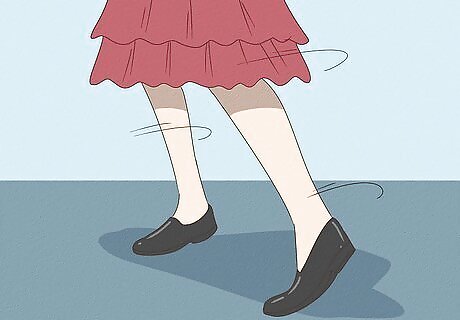
Switch directions. As you twist, you will usually notice that you will favor one side more than the other. If you moved one foot forward at the start of the dance, odds are, that will be the side you twist to more dramatically. To switch directions, simply slide your original forward foot back and bring your original back foot forward. Your body will naturally begin swinging more dramatically to the new side.
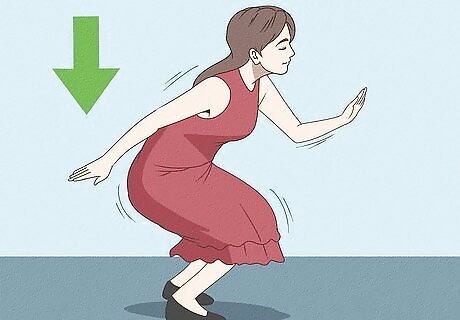
Go low. Gradually bend your knees more as you twist which will lower your body further. Hold this position for a few beats, then rise back up by raising your knees to the starting position. Both the dropping and rising part of the move should be slow and steady.
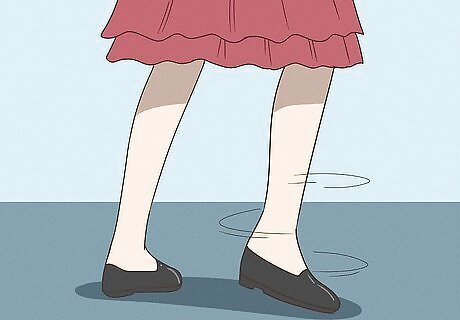
Move one leg at a time. With the normal twist, both feet move in synchronized harmony. Instead, hold one foot still while twisting the heel of your other foot as your hips shift from side to side. The leg of the stationary foot will not rock from side to side, but the knee will bend forward and back in response to your body movement.
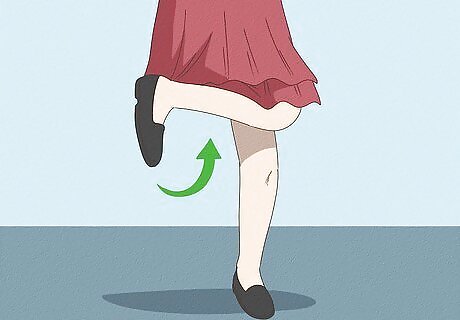
Lift your leg. As you shift your weight to one side, bend the leg of your other side at the knee and lift it up. Hold it up for the entire beat and gradually lower it back down as you shift your weight back to that side. Continue twisting the leg you lift as you hold it up. In doing so, your leg will usually kick back or to the side in response to the overall movement.

Wave your arms. You can throw a little flair into the dance by raising your arms above your head and waving them to the beat. You do not need to keep your arms above your head the entire time. Instead, mix things up by doing this for part of the dance and keeping your arms in the standard bent position for the rest of the dance.
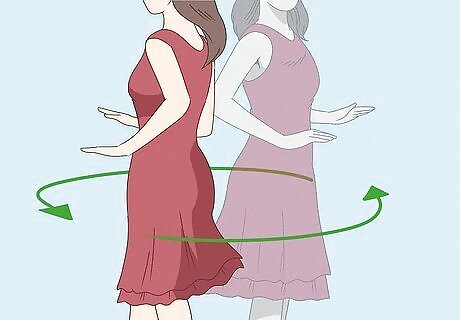
Go round and round. For a different type of arm movement, keep your arms bent at the elbows and swing the forearm portion in a circular motion in front of your body. Keep your arms in sync with each other as you swing them. This move was first made popular by the "peppermint twist."
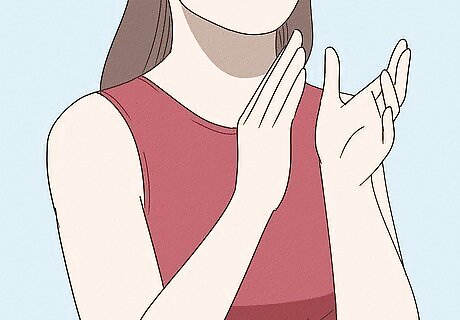
Add claps. Consider clapping to the beat as you twist the rest of your body. This is one of the easier ways to make the dance your own, and it can be a good move to use if you are still new to the dance. Clapping can help enact the beat of the twist. This is another move first exemplified in the “peppermint twist” version of the dance. Mix up your clapping to make it more interesting. On one beat, clap once; on the next, clap twice. Alternate back and forth between one clap and two, maintaining this pattern for the duration of the song.
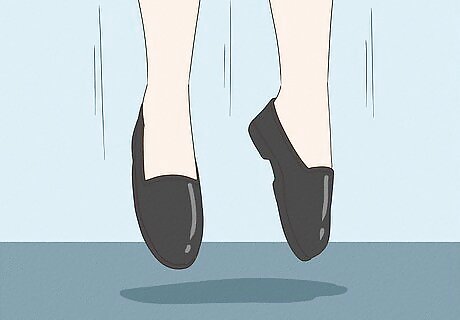
Take a leap. The usual twist requires you to keep your body low. If you want to really stand out, gradually rise up from your low position and give a quick jump straight up on one beat. Afterward, shift your body back down to its usual position.















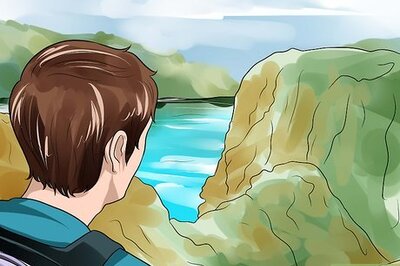



Comments
0 comment